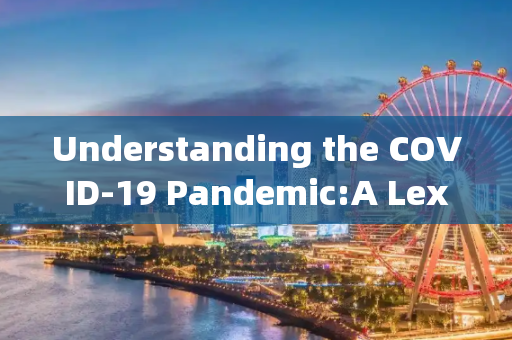The COVID-19 pandemic has been a defining global event of the 21st century, affecting every aspect of life from health to economics and social interactions. As the world grapples with the ongoing challenges posed by the virus, it is essential to have a clear understanding of the terminology used to discuss the pandemic. This article aims to provide a comprehensive lexicon of key English terms related to COVID-19, helping readers navigate the complex landscape of discussions surrounding the virus.
-
Coronavirus (CoV): A family of viruses that cause illnesses ranging from the common cold to more severe diseases like Middle East Respiratory Syndrome (MERS) and Severe Acute Respiratory Syndrome (SARS). The novel coronavirus causing the current pandemic is officially named SARS-CoV-2.
-
COVID-19: The disease caused by the SARS-CoV-2 virus. It stands for "coronavirus disease 2019" and is characterized by symptoms such as fever, cough, and difficulty breathing.
-
Pandemic: A term used to describe an outbreak of a disease that occurs over a wide geographic area and affects an exceptionally high proportion of the population.
-
Epidemic: A澳门6合宝典 term used to describe a sudden increase in the number of cases of a disease in a population.
-
Outbreak: A sudden occurrence of a disease in a particular place or among a particular group of people.
-
R0 (R-naught): A measure of how contagious a disease is. It represents the average number of people an infected person will pass the disease on to.
-
Asymptomatic: Individuals who are infected with the virus but do not show any symptoms.
-
Presymptomatic: Individuals who are infected and can spread the virus but have not yet developed symptoms.
-
Symptomatic: Individuals who are infected and show symptoms of the disease.
-
Incubation Period: The time between exposure to a virus and the appearance of symptoms.
-
Quarantine: The separation and restriction of movement of people who may have been exposed to a contagious disease to see if they become sick.
-
Isolation: The separation of people who are known to be ill with a contagious disease from those who are not sick.
-
Social Distancing: The practice of maintaining a physical distance from others to prevent the spread of a contagious disease.
-
Lockdown: A strict restriction on movement and social interaction to control the spread of a contagious disease.
-
Vaccine: A substance that stimulates a person's immune system to produce a defense against a specific disease, such as COVID-19.
-
Vaccination: The act of introducing a vaccine into the body to produce immunity to a specific disease.
-
Booster Shot: An additional dose of a vaccine given to maintain or improve immunity to a disease.
-
Herd Immunity: A form of indirect protection from infectious disease that occurs when a large percentage of a population becomes immune to the disease, either through vaccination or previous infections, thereby reducing the likelihood of infection for individuals who are not immune.
-
PCR Test: A diagnostic test that detects the presence of the SARS-CoV-2 virus's genetic material, indicating an active infection.
-
Antibody Test: A test that detects antibodies in the blood, indicating that the person has had a previous infection with the virus.
-
Variants of Concern (VOC): Mutations of the SARS-CoV-2 virus that have shown to spread more easily, cause more severe illness, or reduce the effectiveness of vaccines and treatments.
-
Mild, Moderate, and Severe Cases: Classifications of COVID-19 cases based on the severity of symptoms and the level of medical intervention required.
-
Long COVID or Post-Acute Sequelae of SARS-CoV-2 infection (PASC): A condition in which individuals continue to experience symptoms or develop new symptoms after recovering from the acute phase of COVID-19.
-
Non-Pharmaceutical Interventions (NPIs): Public health measures taken to reduce the spread of diseases, such as wearing masks, hand hygiene, and improving ventilation.
-
Contact Tracing: The process of identifying, assessing, and managing individuals who have been exposed to a contagious disease to prevent further spread.
Understanding these terms is crucial for staying informed and engaged in the global response to the COVID-19 pandemic. As new developments emerge, it is important to continue educating oneself and others about the evolving language of public health and safety.














 豫ICP备2021002679号-1
豫ICP备2021002679号-1
还没有评论,来说两句吧...